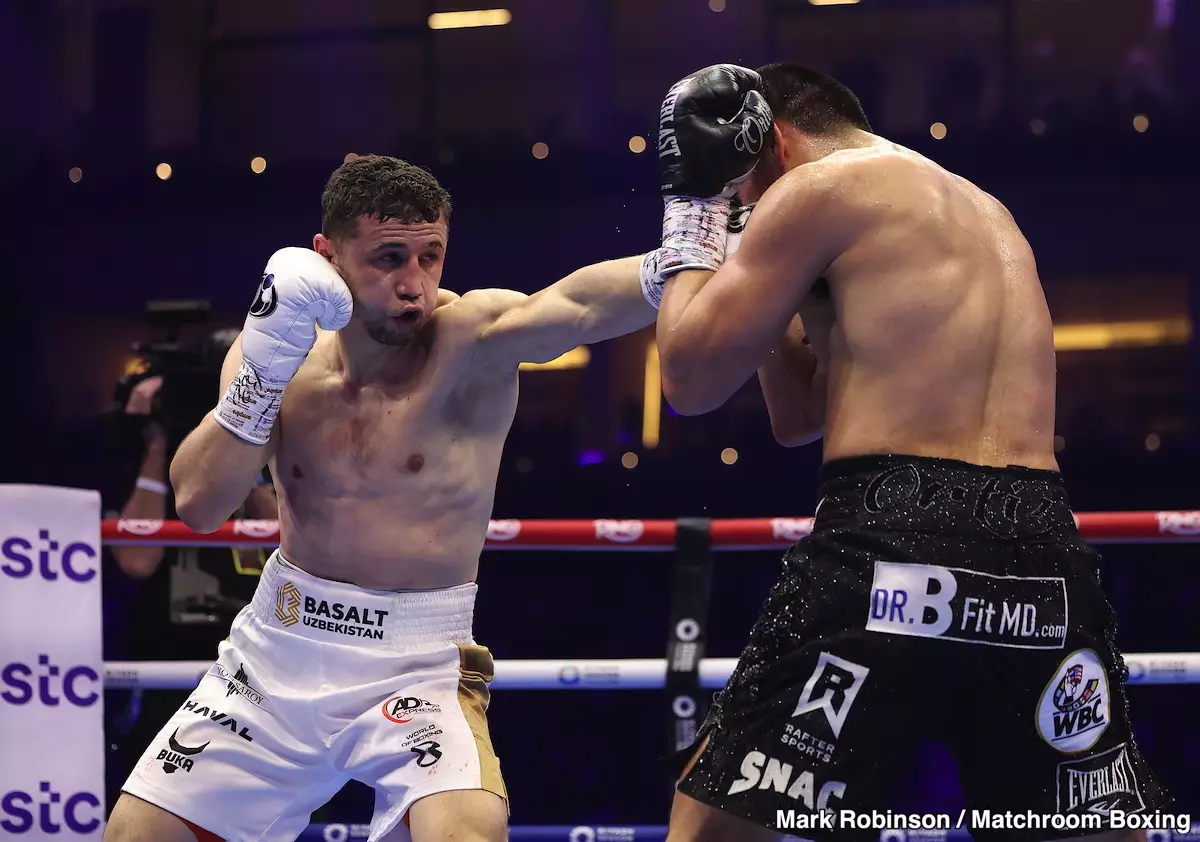On a dramatic Saturday night in Riyadh, Saudi Arabia, Vergil Ortiz Jr. faced Israil Madrimov in a fiercely contested bout for the WBC interim junior middleweight title. Ortiz Jr. emerged victorious through a 12-round unanimous decision, with judges scoring the fight 115-113, 115-113, and 117-111 in his favor. However, a detailed analysis of the match reveals much more than just the outcome. Ortiz Jr. learned several lessons in the ring that night, and they weren’t just about power punching and pressure tactics.
The initial rounds of the match showcased Madrimov’s tactical prowess as he effectively utilized his movement and punching power. Ortiz Jr., who entered the ring undefeated, appeared sluggish in those early exchanges, struggling to land clean shots as Madrimov darted in and out of range. The dynamic nature of the fight highlighted the challenges Ortiz Jr. faced, particularly against a nimble opponent like Madrimov. By the end of the bout, Ortiz Jr. bore the marks of the skirmish, especially around his eyes, indicative of the difficulty he experienced in dealing with Madrimov’s style.
Often, the distinction between victory and defeat in boxing rests on subjective interpretations made by judges. In Ortiz Jr.’s case, it seems the judges disproportionately rewarded his pressure fighting over effective combinations. Most observers could argue that Madrimov’s performance, especially in the first half, warranted more favorable scoring. With Madrimov seemingly winning the majority of the rounds, controversy looms over the legitimacy of the judges’ scores. The 7-5 observation by many boxing experts suggests that a clearer evaluation should be provided for future matches.
Oscar De La Hoya, Ortiz Jr.’s promoter, claimed that Ortiz Jr.’s body shots and ability to cut the ring off played a significant role in his victory. However, these assertions seem discordant with the overall impression of the fight. While De La Hoya’s optimism regarding Ortiz Jr.’s performance is commendable, it raises questions about the disconnect between a promoter’s insight and the fight’s reality. Many observers noted that Ortiz Jr. struggled comprehensively against Madrimov’s agility and power.
The turning point of the match appeared to come in its latter half. As Madrimov began to tire, Ortiz Jr. capitalized on the dwindling pace of the fight, seizing control and showcasing his own power. While Ortiz Jr. rallied impressively towards the fight’s conclusion, one must consider whether this shift was a product of his resilience or a direct consequence of Madrimov’s diminishing stamina. The effectiveness of Ortiz Jr.’s early rounds cannot be overlooked, for they set the stage for a less competitive battle in the later stages.
In boxing, pacing and conditioning play vital roles in determining fighter effectiveness. Even with his superior striking power, Ortiz Jr. exhibited a reliance on contrast rather than finesse during the bout. This element became prevalent when Madrimov, initially in command, faded away physically. Rather than using strategic adjustments, Ortiz Jr.’s late-round success stemmed from an advantage created by his opponent’s fatigue rather than his own refined tactics.
The Future of Vergil Ortiz Jr. and Potential Matches
Looking ahead, the implications of this fight raise significant questions about Ortiz Jr.’s trajectory in the boxing world. While De La Hoya optimistically suggested that a match between Ortiz Jr. and Terence Crawford could be in the cards, the reality seems less promising. Crawford, coming off a profitable string of bouts, has little incentive to risk his career and financial standing against an up-and-coming fighter like Ortiz Jr. unless the conditions favor him significantly.
The boxing community should remain skeptical about matchmaking ambitions articulated by promoters. In the world of elite boxing, prize fighters often prioritize financially rewarding encounters against reputable opponents. As Ortiz Jr. continues to develop, he must refine his approach in the ring, learning to adapt his strategy as the situation dictates, rather than relying solely on innate power or pressure.
Vergil Ortiz Jr.’s fight against Israil Madrimov served as a microcosm of the challenges that come with rising through the ranks in boxing. It unveiled critical weaknesses and areas for improvement, particularly in terms of technique and adaptability. As Ortiz Jr. progresses in his career, he must take these lessons to heart, moving beyond simply seeking out punishing shots and instead developing a comprehensive strategy to counter diverse fighting styles. Moving forward, additional adjustments may be necessary if he hopes to solidify his standing as a premier fighter in the competitive landscape of boxing.


Leave a Reply